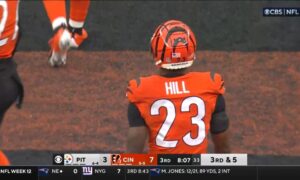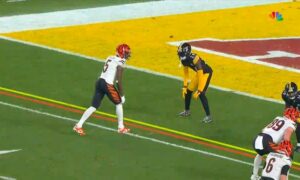By Christina Rivers
Is tragedy a larger issue for past NFL players than we ever dreamed was possible? The death of Junior Seau has uncovered a dark side of the retirement world post-professional football that would have Obi Wan shuddering. The sports world is abuzz with questions about how the league will handle what has surfaced and how much they\’ve known all along and never addressed.
Fans and players alike have condemned NFL Commissioner Roger Goodell for initiating new rules regarding player safety, saying he was ruining the game. Statements about how football would turn into \’powder-puff\’ games with \’men in skirts\’ became so common on social networking sites that it had its own following. The question now should be whether or not the NFL and Goodell are doing enough; not how the game will be a shadow of its old self.
Post-career issues have moved to the forefront whether we feel uncomfortable about it or not. With Seau\’s alleged suicide and those closest to him saying such action was uncharacteristic of him, we see that our heroes aren\’t immune to personal tragedy. We may never know why Seau drove his car off of a cliff in 2010 and then took his life two years later.
In 2011, Dave Duerson (former defensive back for the Chicago Bears) shot himself in the chest. He left a note behind for his family asking them to donate his brain for research on Chronic Traumatic Encephalopathy (CTE). CTE has been discovered in at least 20 other deceased former professional football players. Duerson (50) believed he suffered from the condition, and upon examination of his brain, evidence was positive.
CTE is progressive and degenerative. Unfortunately, research has been unable to pinpoint the exact cause-effect. CTE was only part of the reason the NFL implemented rules they can only assume will help prevent brain trauma.
Two weeks prior to Duerson\’s death, former Atlanta Falcons cornerback Ray Easterling (62) fatally shot himself. His wife told FoxSports.com that her husband suffered from depression, dementia and insomnia.
In regards to Seau, Julian E. Bailes, M.D., Chairman of the Department of Neurosurgery at University of Chicago North Shore and former NFL, current NCAA team physician and co-founder of the Brain Injury Research Institute said, “You\’re looking at someone who is approaching or at 30 years of exposure (to repetitive head injuries).”
Bailes has studied the brains of former Steelers greats; Mike Webster, Terry Long and Justin Strzelczyk. He has also autopsied former NFL players; Andre Waters (Philadelphia Eagles) and Chris Henry (Cincinnati Bengals). Dr. Bailes was once the team physician for the Pittsburgh Steelers and a team physician for the West Virginia University Mountaineers football team. His research is maintained at North Carolina University. In Chapel Hill, Dr. Bailes and his colleagues hold a brain and tissue bank at the Center for Study of Retired Athletes.
Eight San Diego Chargers players who were on the 1994 AFC Championship team (Super Bowl XXIX) had passed away before Seau joined them. Linebacker David Griggs (28) was killed in June 1995 after his car left a South Florida expressway ramp and hit a pole. Four additional teammates died between 2008 and 2011; Chris Mims (Oct. 15, 2008) of an enlarged heart, Doug Miller from heart failure following a double lightning strike, Shawn Lee (44) whose heart arrested after he suffered double pneumonia and a battle with diabetes and Rodney Culver (26) died after boarding ValuJet Flight 592 that crashed into the Florida Everglades.
Granted, there is no evidence as such to say that any of the Chargers\’ tragedies were brought on by CTE. Many health issues that past players have experienced can\’t be proven as being caused by CTE either; yet.
Hank Bauer, a former Chargers player and the team\’s radio analyst said publicly about Seau, “There was zero warning…I think the message is this: We all forget that people we idolize are just…people. Do we have unreal expectations of our heroes?”
Jason Whitlock of FoxSports wrote an interesting piece about how he felt the game could be changed to make it “worth the risk” players take year after year, play after play. He compared life after the NFL for the “typical player” to be equivalent to a Wall Street millionaire losing everything he had in a stock-market crash. It has become apparent that post-NFL life has taken its toll on many, and that those who\’ve been fighting in court to prove their case may just be the spark that lights an inferno.
While we mourn the loss of our iron-men, all of us should re-investigate whether we love them enough to allow the game to change. One less retired jersey hanging in a stadium because of injuries and death caused by playing a game we love would suit me just fine. I\’d rather see that jersey retired with the man who wore it holding it up for the world to see.







